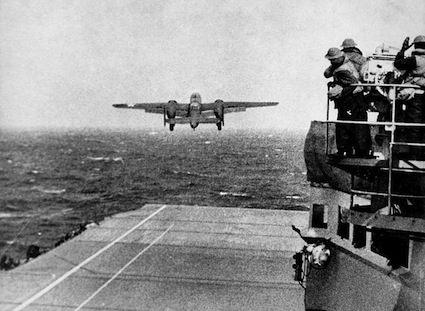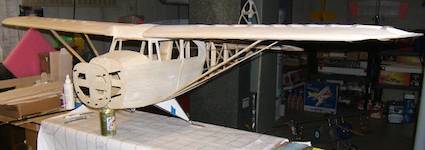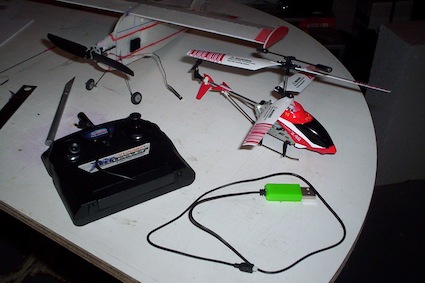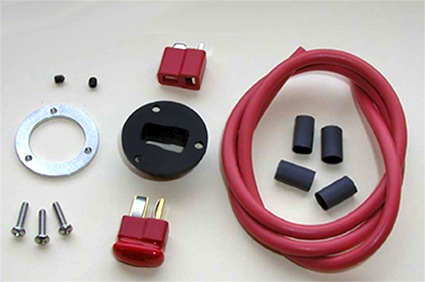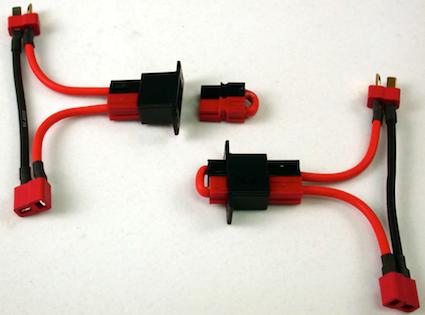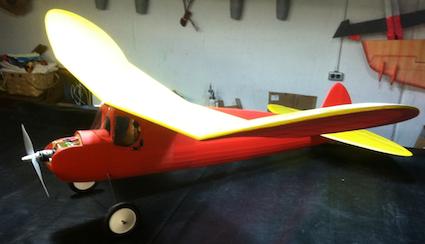 |
Flying High With Electric Power!
The Ampeer ON-LINE!
Fly the Future - Fly Electric! |
Site Table of Contents
| President: | Vice-President: | Secretary/Treasurer: |
| Ken Myers | Richard Utkan | Rick Sawicki |
| 1911 Bradshaw Ct. | 240 Cabinet | 5089 Ledgewood Ct. W. |
| Commerce Twp., MI 48390 | Milford, MI 48381 | Commerce Twp., MI 48382 |
| (248) 669-8124 | (248) 685-1705 | 248.685.7056 |
 | ||
| Board of Directors: | Board of Directors: | Ampeer Editor |
| David Stacer | Arthur Deane | Ken Myers |
| 16575 Brookland Blvd. | 21690 Bedford Dr. | 1911 Bradshaw Ct. |
| Northville, MI 48167 | Northville, MI 48167 | Commerce Twp., MI 48390 |
| 248.924.2324 | 248.348.2058 | 248.669.8124 |
| Mailed Ampeer printed subscriptions are no longer available.
The Ampeer is FREE on-line in Acrobat .pdf format and HTML with active links! | ||
| The Next Meeting:
Date: Thursday, March 15 Time: 7:30 p.m. Place: Ken Myers' house, Commerce Twp., MI (see info above) | ||
| What's In This Issue? | |
| A Different Power System Recommendation for Harvey's 80" PBY, Ken suggests another power system possibility | Electric Twins, Are You Ready?, Ken discusses the four factors that must be considered for a first twin project. |
| A 1/4-scale Piper Tri-Pacer, Don Belfort shares a photo of his plane under construction. | Michigan Source for Indoor 3D Types, Bill Mackey shares a source in Michigan. |
| Musing From Iowa on Wing Cube Loading, Plenny Bates shares info on the WCL of two of his gliders. | Looking for Plane Plans?, Tom Cimato reminds us where to look for some classic plans. |
| Good February 2012 Issue, Art Lane shares photos of his Lasy and indoor Heli and an indoor venue in Canada. | RC Safety Item: ArmSafe, Doug Schumacher shares info on his latest product. |
| Maxx Products Arming Switch, info on the arming switch from Maxx Products. | Indoor Flying Equipment Source, Alex Stockli shares a source he found |
| A Brooklyn Dodger Conversion, Willie McMath shares his conversion of this old-timer with photos. | RC Micro World Continues, Bob Aberle shares some info on this e-zine. |
| RCadvisor Calculator Now 100% Free, Carlos Reyes site now FREE and more and articles available. | |
|
By Ken Myers kmyersefo@theampeer.org The February 2012 issue of the Ampeer presented a power system recommendation for a scratch-built 80" PBY; "Twins: An 80" PBY Power System".
Electric Twins, Are You Ready?
Twin-engine aircraft, twins, seem to fascinate many RC modelers. Maybe it is an historical image we carry in our minds. We can picture a Doolittle B-25 lifting from the deck of the Hornet or the sleek design of a de Havilland DH-88 Comet.  Unfortunately, all too often our fantasy, when put into practice with a model twin, doesn't work out all that well. 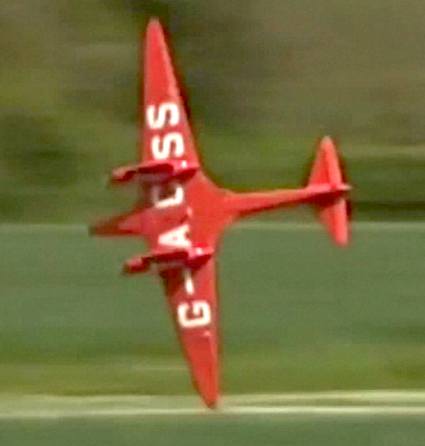
Are Twins Really More Difficult to Fly? Several EFO members and friends fly twins on a regular basis. Keith Shaw flies his DH-88 Comet "Black Magic" or an Aero Commander Shrike or his modified TwinStar seaplane. Jim Young might have his self-designed DH-88 Comet or Gloster Meteor. Denny Sumner may have his Sportwin, Super Sportwin or HOB Commander/Shrike. Paul Sockow might be seen flying his Multiplex TwinStar II. Jim Senia brings out his Dynam Grand Cruiser Twin. Tom Bacsanyi usually has his big P-38 at many of our outings. Rick Sawicki has a Banana Hobby P-38.
There are four factors that greatly influence the success of any twin.
I have found seven WCL levels. Level 1 ? - 2.99 oz./cu.ft. flies like indoor Level 2 3 - 4.99 oz./cu.ft. flies like backyard flier Level 3 5 - 6.99 oz./cu.ft. flies like park flier Level 4 7 - 9.99 oz./cu.ft. flies like trainer/sport Level 5 10 - 12.99 oz./cu.ft. flies like adv. sport Level 6 13 - 16.99 oz./cu.ft. flies sporty for an Expert Level 7 17+ oz./cu.ft. requires expert finesse on the sticks and a complete understanding of the things not to do with the particular aircraft! The majority of planes flown by the whole RC Community, electric/glow/gasoline, are WCL Level 4 planes. On any given day at an RC flying field you see more planes that belong in Level 4 than any other type. |
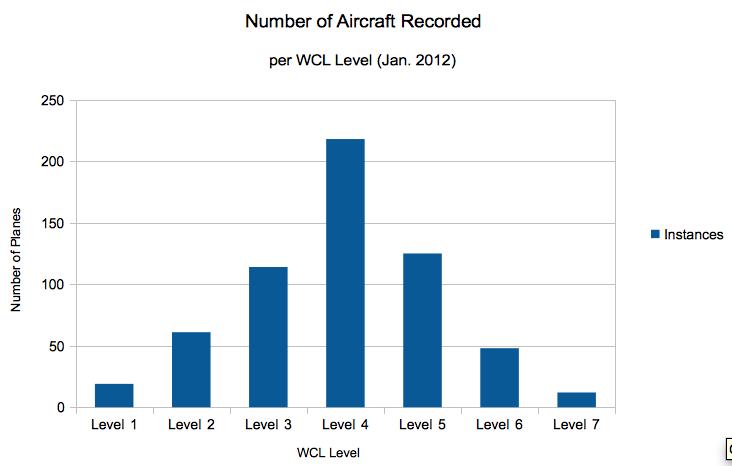
|
Over the years I have logged data for over 600 individual aircraft. The data comes from reviews in magazines, online and personal experience. The data in the graph demonstrates that Level 4, 7 oz./cu.ft. through 9.9 oz./cu.ft., is the dominate type of RC aircraft. Well over 1/3 (218) of the logged planes are of this type.
|
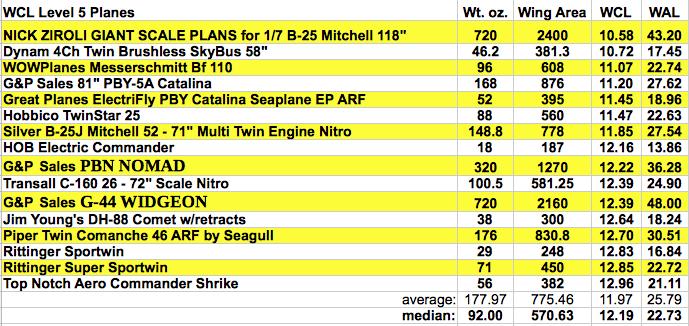
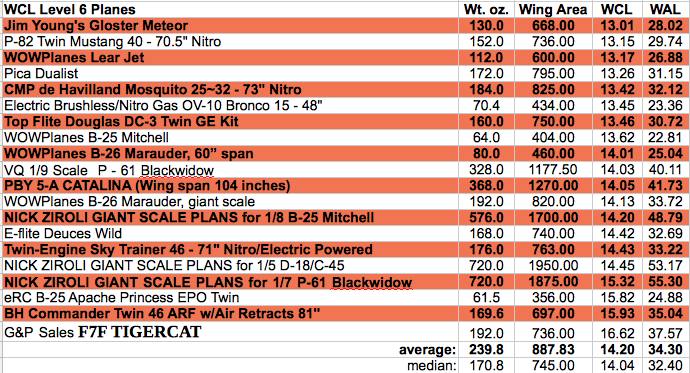
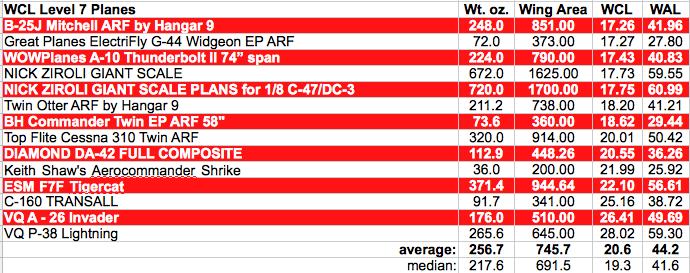
|
The majority of RC pilots fly planes in WCL Levels 1 - 4 or 5. A second factor that influences the success of a twin is speed. There is no, or very, very little data available on actual flight speeds for the majority of RC models.
|
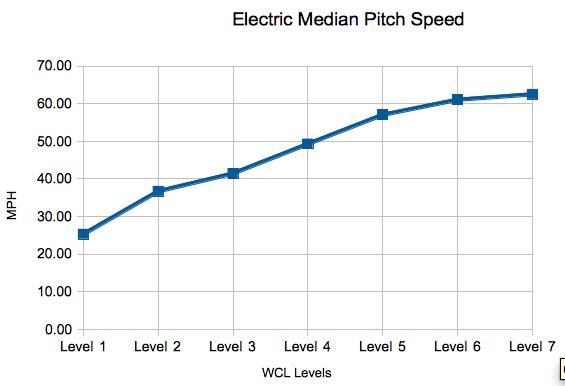
|
The graph shows the median pitch speeds for electrically powered prop planes in WCL Levels 1 through 7. Median indicates that half the planes are faster and half slower, but it gives a reference point.
The third factor is wing planform and overall design. As demonstrated by the photo of the crashing DH-88 near the beginning of the article, a highly double-tapered wing planform can sometimes provide unwanted consequences, even worse than when used on a single engine aircraft. There is little help online regarding the selection and tips for a twin project. There are two articles online that provide some tips for glow powered planes. They are "So You Want To Fly Twin Engine RC Planes" author unknown and "twin tips - 1/21/2012" by Ed Moorman.
Both authors are vague about wing loading. Author Fly Twin, "Wing loading is higher than standard airplanes and so landing speeds are faster... Do not try to slow down and risk a stall..." Ed Moorman, "5. Twins are heavy... and have a higher wing loading.
For the 'typical' sport pilot, it is a good idea to select a plane with a lower WCL than a typical twin.
|

Exceptions Table
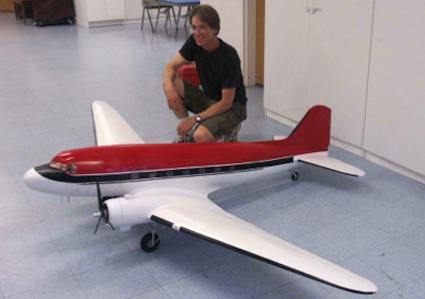 According to Model Aviation, Feb. 2012, page 97, Jeff Weisend's DC-3 has an astoundingly low WCL of 3.74 oz./cu.ft. and flies like a backyard flier. With a wing area of approximately 1420 sq.in. and a weight of only 7.25 lb./116 oz. it is truly amazing. This is not something a typical modeler would be able to create, not that they might want to.
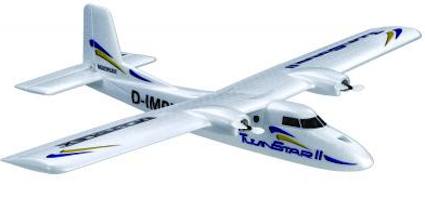 The Multiplex TwinStar II is a good place to start a 'twin experience'. It has the WCL of a park flier, although it is too heavy to fit the AMA definition of a Park Flyer, but it flies like one. 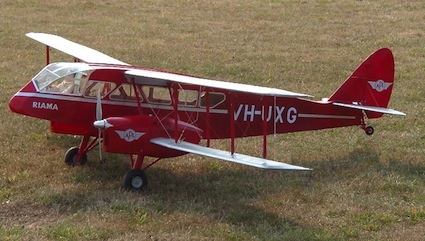
Click on photo to open the link to the builder's site A biplane twin like the de Havilland DH-84 Dragon-2 or the DH-89 Rapide are good choices.
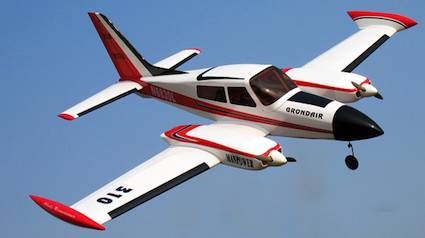 The New 310-Scale 90 - 92.5" Twin Engine Nitro Power Radio Controlled Plane ARF is a glow powered plane but has what appears to be an extremely low WCL, based on their specifications.
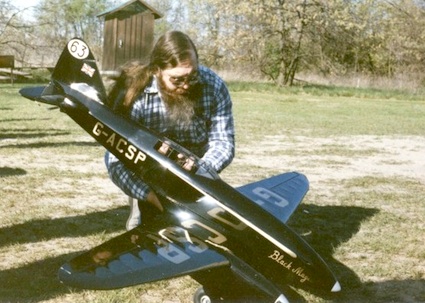 A twin the size and weight of Keith Shaw's "Black Magic" is best left to the master. The empty fuselage weighs just 4 oz. Can you do that? 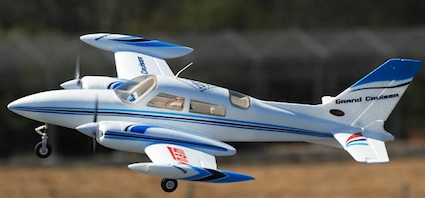 The Dynam Grand Cruiser Twin flies like a sport plane. Anyone who is comfortable flying sport planes should be successful with it. 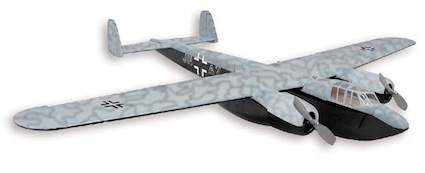 The SIG Do 217 provides one more clue to producing a successful twin. It has a WCL on the high side of sport or low side of advanced sport, which indicates that folks who generally fly planes in the Level 4 category shouldn't have a problem flying it. The designer used several "tricks" to make this a twin that can be flown by the 'masses'.
The fourth factor is pilot experience.
WCL = RTF weight in ounces / ((wing area/144)^1.5) The highest WCL of your regularly flown fleet indicates the level that you are comfortable flying at. For me, it would be my Bill Griggs Rocket and my self-designed E-250. The Rocket has a CWL of 16 oz./cu.ft and the Lightening (yes, I meant Lightening not Lightning) E-250 14.9 oz./cu.ft. Both are CWL Level 6 types. Personally, I would choose a twin like those listed in the Level 5 table to start with and then move up through each progressive level to reach my 'ultimate scale twin'. Whenever possible, follow the recommendation of the manufacture, designer, supplier or what was used on similar types and sizes found in the modeling press or online.
1.) For your first twin, choose a subject with a WCL similar to or just below the WCL level you are comfortable flying at now. There is a lot to learn about twin engine operation. Learning to fly with a WCL greater than you are comfortable with should not be one of them. 2.) Before flying your twin, put in a lot of practice time on your highest WCL plane(s) and consider acquiring a single-engine type with an even higher WCL or even adding weight at the CG to a plane you already have. 3.) If you 'roll your own' designs, consider going through a series of steps to get to your ultimate twin. Remember that the more options* that are added to the airframe the heavier it becomes with a resulting higher WCL and the more difficult it becomes to fly.
Information about wiring brushless twins: Video:
Web Links:
Magazine:
A 1/4-scale Piper Tri-Pacer
Hi Ken, Here's my 2012 Project. It is a 1/4-scale Piper Tri-Pacer from Calvin's Classic Plans. I'll keep you posted on the Tri-Pacer! Michigan Source for Indoor 3D Types
Ken, Many of the better indoor 3D type flyers are using aircraft from Western Michigan Parkflyers. We fly in a smaller size church space. Web address wmparkflyers.com/default.aspx Bill Musing From Iowa on Wing Cube Loading (WCL)
Ken, Have enjoyed the Cube Wing Loading pieces.
Plenny Bates Looking for Plane Plans?
I received this reminder from Tom. Check it out. KM Hi, Bob Aberle's "Frequently Asked Questions" column in the February 2012 issue of Model Aviation listed this plan service in the UK. Great source of downloadable pdf plans. Enjoy "hours&quit; of searching and nostalgia.
Good February 2012 Issue
Ha, did I say your January issue was Fantastic? Well, you've outdone yourself this time. The February issue is a real keeper, even has indoor info. Told ya we'd get you into this. Many thanks Ken. GREAT Job.
Art 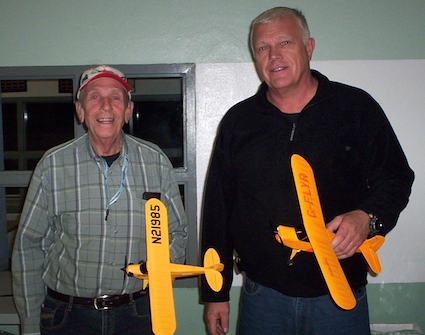 Thank you so very much Art. Keep us informed on the Lasey. You might be interested to know that your name first appeared in the Ampeer in the July 1988 issue. Scroll to the bottom of the issue and there is your name on the map to the London field. RC Safety Item: ArmSafe
You've probably seen this advertised in all the current RC magazines, but here's a little more 'background' on Doug. KM Hi Kenneth, I'm a RC club member from the WRC Club in Gilford, NH. And after years of seeing propeller injuries, we developed the ArmSafe System to help reduce the possibility of propeller strikes. IT IS AN OLD IDEA IN A NEW PACKAGE. The product was developed out of necessity for a small, light, and high amp arming system. The product has gone through several iterations over the many months of development and testing, to make it as small and light as possible. It has been an exhaustingly long (and expensive) process to bring this product to market, but we are finally here!!!
Thank you and Happy New Year,
Maxx Products Arming Switch
As Doug mentioned, this arming switch has been on the market for quite awhile and has been mentioned in previous Ampeers.
Indoor Flying Equipment Source
Hi Ken, First of all, I would like to thank for your monthly information about EFO. I like it very much. Now, since the Winter season is here, the discussions about indoor flying is the number one theme with the club members. I am always looking for mini or micro motors and servos. While looking for parts on the Internet, I came on this page: www.aeorc.com.
Yours Alex (Oldtimer, only 80 years)!!!! A Brooklyn Dodger Conversion
Hello Ken, Enjoyed your latest issue of the Ampeer.
Happy Holiday season to You and Family.
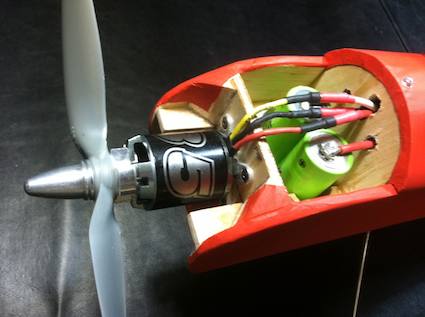 RC Micro World Continues
It is now published and edited by Roland Friestad. Roland took the place of the late, John Worth. (The Cloud 9 Web site should be up and running by the time you receive this issue. KM) We also have plans to place all 38 of my micro designs, that appeared as construction articles in RCMW, on to a single CD which will include access to full size plans and as a bonus will have a copy of my 120 page book/CD on the subject of micro/indoor RC flying. RCadvisor Calculator Now 100% Free
I have launched a brand new version of my website, RCadvisor.com. There are two major changes: 1. My model airplane calculator is now 100% free.
With over 10,000 registered calculator users already, I expect the calculator to be more popular than ever. The feedback on the articles has also been very positive. I hope you like the changes. |
To Reach Ken Myers, you can land mail to the address at the top of the page. My E-mail
address is:
kmyersefo@theampeer.org
EFO WEB site: http://www.theampeer.org
